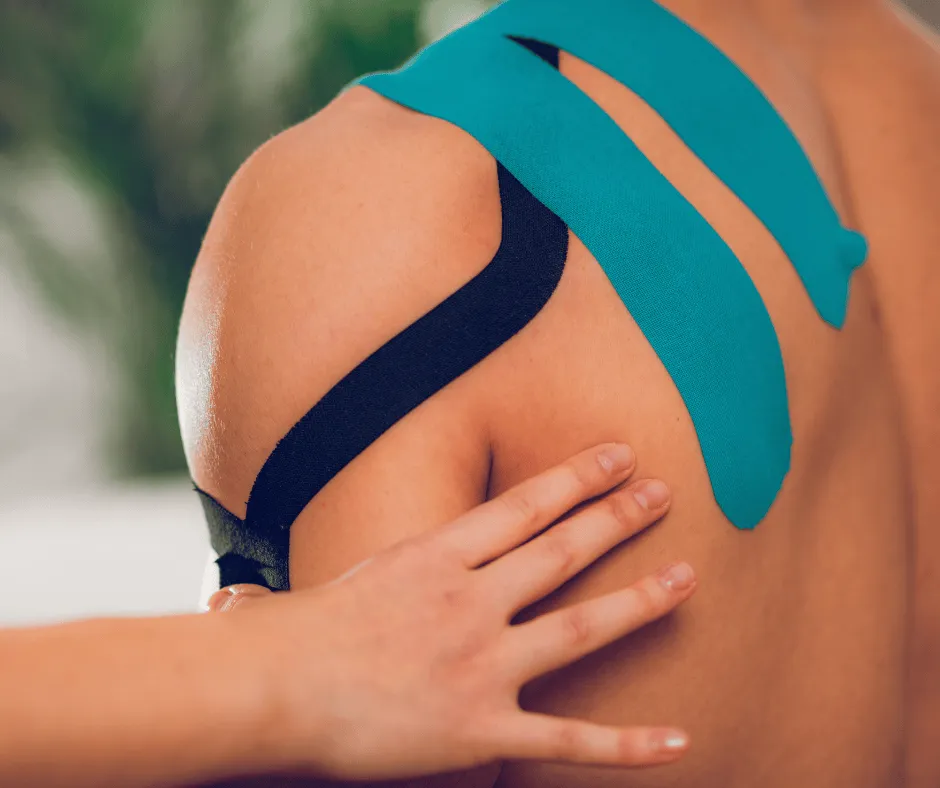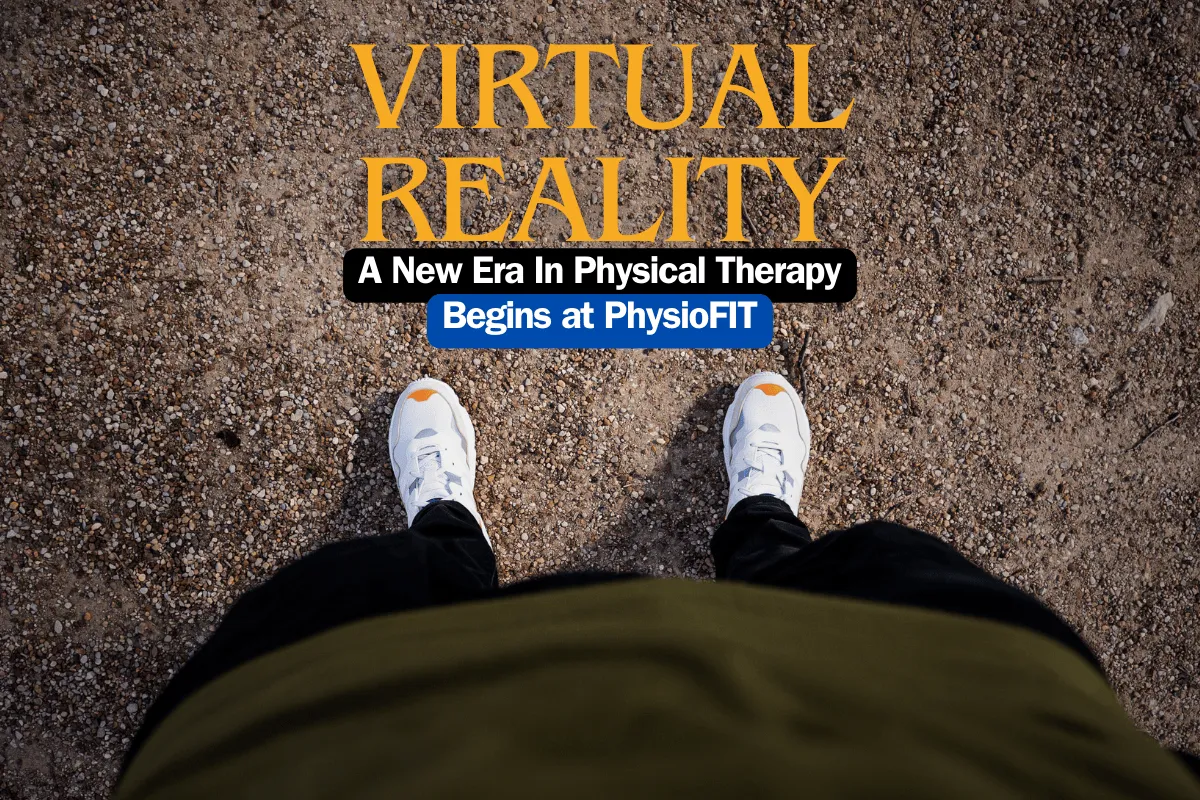Shoulder Pain Relief
Rediscover Life Without Shoulder Pain
Renowned as a marvel of human anatomy, the shoulder joint offers unparalleled mobility and flexibility, enabling us to perform a myriad of tasks, from reaching out for a book on the top shelf to throwing the perfect spiral with a football. Yet, this exceptional range of motion comes at a price. Over time, instability or impingement of the soft tissues or bony structures in your shoulder may cause discomfort and pain. This pain might be transient or persisting, may manifest only when you move, or may be a constant presence, prompting the need for professional intervention.
We're pleased to share that minor shoulder pain frequently shows a promising response to strategies such as physical therapy, the use of shoulder supports, upholding a healthy lifestyle, all of which can bring about substantial relief. Here at PhysioFit, we comprehend that each person's journey to a pain-free life is distinct. We're dedicated to delivering personalized, science-backed treatments with a fitness-centric approach to effectively ease your shoulder discomfort, helping you return to your everyday activities.
What You Should Know
The human body's most versatile joint, the shoulder, owes its expansive motion range to a quartet of muscles and their corresponding tendons, collectively known as the rotator cuff.
Intriguingly, shoulder pain may sometimes be a symptom of an issue originating from another part of the body, such as the neck or lungs. This phenomenon, known as referred pain, typically presents as a persistent ache that doesn't worsen with shoulder movement.
Shoulder discomfort or pain can result from inflammation, injury, or bone alterations surrounding the rotator cuff.
A proper diagnosis of a shoulder problem involves a thorough evaluation from a professional

Understanding the Common Causes of Shoulder Pain
The shoulder is a complex joint, and it's susceptible to a variety of injuries and conditions. Here are some of the most common causes of shoulder pain:
Dislocation: This happens when the top of your arm is pulled back excessively or rotated too far, causing it to pop out of its socket. Symptoms include pain, weakness, swelling, numbness, and bruising in the shoulder.
Separation: This injury affects the acromioclavicular (AC) joint, where the collarbone and shoulder blade meet. A hard blow or fall can tear the ligaments, leading to a visible bump on top of your shoulder due to a displaced collarbone.
Fracture: A fall or severe blow can result in a broken or cracked bone. The clavicle (collarbone) and humerus (upper arm bone) are most prone to fractures, leading to intense pain, bruising, and restricted movement.
Cartilage Tear: Repeated motion, a fall, or a significant force can damage the cartilage that cushions your shoulder joint. Symptoms include pain during overhead reach, shoulder weakness, and a sensation of catching, locking, or grinding.
Rotator Cuff Tear: The group of muscles and tendons comprising your rotator cuff secure your arm in place and enable overhead lifting. Overuse, falls, or natural aging can cause damage, leading to pain (particularly at night), reduced lifting ability, and a crackling sound during movement.
Frozen Shoulder: Characterized by restricted joint movement, this condition is caused by the build-up of abnormal tissue bands (adhesions) within the joint, often following pain or surgery-induced disuse.
Impingement: This occurs when the tendons of the rotator cuff are pinched between the shoulder bones, causing pain and swelling, particularly in individuals who frequently lift their arms overhead.
Bursitis: Overuse, repetitive motions, or an injury can inflame the bursa (a fluid-filled sac that cushions the joint), leading to pain, especially during shoulder movement.
Apart from these, other potential causes of shoulder pain include: Osteoarthritis, Rheumatoid arthritis, Heart attack, Bone Spurs, Referred pain, and Tendinitis.
Remember, if you resonate with any of the symptoms or conditions mentioned, we highly recommend making an appointment with us for a thorough evaluation and personalized treatment plan.
Preventive Measures for Shoulder Pain
The bright side of shoulder issues is that they can often be resolved without resorting to surgery. However, prevention is always better than cure, and here are some ways you can safeguard your shoulders.
Heed Your Body's Signals: Do not dismiss shoulder discomfort that follows any activity. If the pain is intense and persistent, consult your doctor. Remember, enduring unnecessary pain might only exacerbate the situation.
Maintain Overall Health: Stay in prime physical condition with regular exercise and a balanced diet. It's not just a ticket to overall wellness, but it also helps in warding off potential injuries.
Adopt Correct Exercise Habits: Ensure a proper warm-up before your workouts. Gradually ease into a sport or activity if you've been inactive for a while. Learn and adhere to the correct techniques of weight lifting, and avoid lifting beyond your capacity.
Stay Safe at Work: Be conscious of your shoulder health in your work environment -
Prioritize good posture, whether you're sitting or standing.
Follow safe lifting practices. Maintain a straight back and leverage your leg strength.
Every hour, take a few minutes to move around and stretch.
If your job involves a desk, ensure your workstation is ergonomically set up for comfortable computer use.
Avoid Overreaching: When you need to access high places, use a step stool. Arrange frequently used items within easy reach, in lower drawers or shelves.
Remember, caring for your shoulder health can keep you active and pain-free in the long run.

Common Symptoms of Shoulder Pain
Heat or a reddened appearance in your shoulder
Restricted arm mobility
Stiffness and reduced strength in your muscles
A sensation of clicking, popping, or grinding during arm movements
Discomfort in your neck, arm, or back
Remember, if you resonate with any of the symptoms or conditions mentioned, we highly recommend making an appointment with us for a thorough evaluation and personalized treatment plan.
Please Note: The information provided on our website is intended for general education and is not a substitute for professional medical advice. Each individual's situation and body is different. Therefore, what may work for one person may not work for another. We care about your well-being and advise you to reach out to us to discuss your specific needs before implementing any advice from our website.
Your Source for All Things Physical Therapy in Bend Oregon
The PhysioBlog

PhysioFIT's VR Edge: Pioneering a New Era in Physical Therapy in Bend
Physical Therapy In Bend Oregon
Please Note: The information provided on our website is intended for general education and is not a substitute for professional medical advice. Each individual's situation and body are different. Therefore, what may work for one person may not work for another. We care about your well-being and advise you to reach out to us to discuss your specific needs before implementing any advice from our website. If you’d like to explore this more or would like to schedule a time with a physical therapist in Bend Oregon, contact us at PhysioFITBend.com
Introduction
In Bend, Oregon, a cutting-edge transformation is reshaping the field of physical therapy, led by the pioneering efforts of PhysioFIT. As the only clinic in the area harnessing the power of Virtual Reality (VR), PhysioFIT is redefining recovery and rehabilitation processes. This innovative approach perfectly aligns with Bend's dynamic, outdoor lifestyle, offering a unique blend of technology and therapeutic expertise.
By integrating VR into our practice, PhysioFIT stands at the forefront of modern physical therapy, providing a highly engaging, personalized treatment experience that is unmatched in the region. This progressive technique not only aligns with the active spirit of our community but also elevates patient care to new heights, setting PhysioFIT apart as a leader in innovative and effective rehabilitation solutions.
The Rise of VR in Physical Therapy: A Technological Leap
Virtual Reality in physical therapy is a groundbreaking advancement, reshaping our approach to rehabilitation and recovery. By integrating VR, our therapists at PhysioFIT are offering immersive, interactive treatments that elevate the patient experience far beyond traditional methods.
Benefits of VR in Physical Therapy:
Enhanced Engagement and Motivation: VR transforms repetitive, mundane exercises into engaging, interactive experiences. This heightened engagement motivates patients, encouraging regular participation and adherence to therapy programs. It helps focus your mind in ways it wouldn’t normally focus while doing most traditional therapies.
Improved Cognitive and Physical Outcomes: VR scenarios are not just visually stimulating but are also designed to improve cognitive functions and motor skills. This is particularly beneficial in neurological and pediatric conditions where conventional exercises might fall short in sustaining interest.
Real-time Feedback and Adaptability: One of the most significant advantages of VR is its ability to provide immediate feedback. This allows therapists to adapt rehabilitation programs in real-time, addressing the individual needs and progress of each patient. Our PT’s can see what you see while you’re wearing the VR goggles.
VR for Diverse Conditions:
Neurological Rehabilitation: VR plays a crucial role in the rehabilitation of neurological conditions. For patients recovering from a stroke, managing Parkinson's disease, or dealing with multiple sclerosis, VR aids in enhancing balance, coordination, and fine motor skills. The immersive nature of VR helps in retraining the brain, fostering neuroplasticity.
Orthopedic Recovery: In the realm of orthopedic rehabilitation, VR is a game-changer. Whether it's post-surgical rehabilitation or managing chronic pain, VR offers innovative exercises that enhance strength, flexibility, and mobility. It's particularly effective in addressing conditions like ankle sprains, knee surgery recovery, and shoulder pain.
Pediatric Therapy: For children, VR turns physical therapy into a fun, engaging activity. Conditions like cerebral palsy, autism, and developmental delays require a specialized approach, and VR's playful, interactive nature holds their attention, making therapy sessions more effective.
Innovations and Research: The Scientific Backing
The efficacy of VR in physical therapy is backed by growing research. Studies consistently demonstrate improvements in balance, coordination, strength, and overall mobility among patients using VR, as opposed to traditional rehabilitation methods. These findings are crucial in cementing VR's role as a safe, effective, and innovative tool in physical therapy. With the new addition of Virtual Reality into the clinic, PhysioFIT is “leading the pack” among physical therapists in Bend.
Expanding the Scope: VR in Various Therapeutic Settings
Vestibular Rehabilitation: VR is proving to be invaluable in vestibular rehab, especially in conditions causing vertigo and balance issues. Custom VR scenarios challenge the vestibular system, aiding in faster recovery.
Chronic Pain Management: For chronic pain sufferers, VR provides a unique form of distraction therapy, helping in pain management and improving quality of life.
Sports Rehabilitation: Athletes in Bend can benefit from VR, especially for injury prevention and performance enhancement. VR simulations can mimic sport-specific movements, aiding in targeted rehabilitation.
Conclusion
Virtual Reality in physical therapy, as championed by PhysioFIT, represents much more than a technological leap; it marks a significant paradigm shift in patient care and rehabilitation methodologies. In the lively and active community of Bend, Oregon, PhysioFIT is leading the way with VR, not just as a tool but as a transformative pathway in the rehabilitation experience. This technology dovetails with the community's ethos of active living, providing an avenue for accelerated recovery and substantial improvement in overall quality of life for those undergoing therapy.
At PhysioFIT, the implementation of VR transcends traditional therapy boundaries, offering a holistic approach that addresses both physical and mental well-being. This innovative platform ensures that recovery encompasses not just regaining strength or mobility, but re-engaging with life in a meaningful and enjoyable manner. For our PhysioFIT patients, this means a rehabilitation experience that is both effective and empowering, fostering a sense of achievement and progress with every session.
Moreover, PhysioFIT's adoption of VR in our practice underscores our commitment to embracing advanced technology to deliver the highest standard of healthcare. It reflects our dedication to providing innovative treatment options, grounded in scientific research and ensuring safety, reliability, and effectiveness.
By integrating virtual reality physical therapy (VR physical therapy) at PhysioFIT, we're not just setting a new benchmark in patient care; we're enhancing lives. In doing so, we are not only promising a brighter, healthier future for our patients but also opening up a world of possibilities, free from the constraints of physical limitations. For the Bend community and beyond, PhysioFIT's introduction of VR in physical therapy is a stride towards a future where cutting-edge technology and expert human care converge to create transformative, immersive, and deeply impactful healing experiences.
FAQ
Q: What makes VR different from traditional physical therapy methods?
A: Unlike traditional methods, VR offers an immersive, interactive experience that can be tailored to each patient's specific needs, providing a more engaging and potentially faster rehabilitation process.
Q: Can VR physical therapy be used at home?
A: Yes, with the right equipment and guidance from a therapist, VR physical therapy can be adapted for home use, allowing for greater flexibility and convenience in treatment.
Q: How does VR impact mental health during physical therapy?
A: VR has been shown to positively influence mental health by reducing anxiety and improving mood, which can be particularly beneficial in the holistic recovery process.
Please Note: It's important to note that any exercises or techniques that are shared should be performed under the guidance of a qualified bend physical therapy expert to ensure correct technique and to prevent injuries. A physical therapist can provide a customized exercise program based on the individual's fitness level, goals, and any existing injuries or conditions. If you’d like to explore this more or would like to schedule a time with a physical therapist in Bend Oregon, contact us atPhysioFITBend.com
Copyright PhysioFIT 2023 . All rights reserved


